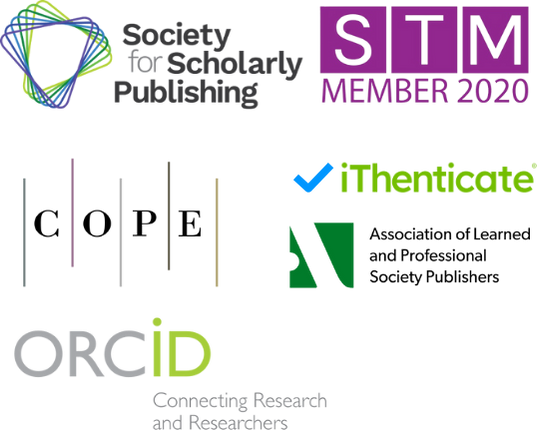Animal Spirit, Financial Shock and Business Cycle
Keywords:
business cycle, animal spirit, financial shock, news shockAbstract
The study explores integrating psychological factors into business cycle theory through behavioral economics. It introduces animal spirits within a financial accelerator based DSGE model involving seven sectors. Results reveal that these animal spirits impact the macro economy by affecting corporate net worth, where positive news stimulates growth in net worth, employment, and output. Additionally, people's initial reaction to news weakens the effects of anticipated shocks. Simulated models with news shocks highlight distinct impacts of monetary and fiscal policies. In scenarios with news shocks, not only monetary policy drives noticeable economic adjustments, but also fiscal policy significantly moderates the economy. Recommendations stress the importance of considering expected factors in policy formulation, advocating proactive fiscal approaches alongside cautious monetary policies to foster growth while curbing potential financial crises due to bubble expansion. This research provides a fresh theoretical framework for governmental policy decisions.
References
1. F. E. Kydland and E. C. Prescott, “Time to build and aggregate fluctuations,” Econometrica, vol. 50, no. 6, pp. 1345–1370, 1982, doi: 10.2307/1913386.
2. G. A. Akerlof and R. J. Shiller, Animal Spirits: How Human Psychology Drives the Economy, and Why It Matters for Global Capitalism, Princeton, NJ, USA: Princeton Univ. Press, 2010. ISBN: 9781400834723.
3. C. Azariadis, “Self-fulfilling prophecies,” J. Econ. Theory, vol. 25, no. 3, pp. 380–396, 1981, doi: 10.1016/0022-0531(81)90038-7.
4. D. Cass and K. Shell, “Do sunspots matter?,” J. Polit. Econ., vol. 91, no. 2, pp. 193–227, 1983, doi: 10.1086/261139.
5. R. E. A. Farmer and M. Woodford, “Self-fulfilling prophecies and the business cycle,” Macroecon. Dyn., vol. 1, no. 4, pp. 740–769, 1997, doi: 10.1017/S1365100597005051.
6. J. Benhabib and R. E. A. Farmer, “Indeterminacy and increasing returns,” J. Econ. Theory, vol. 63, pp. 19–46, 1994, doi: 10.1006/jeth.1994.1031.
7. R. E. A. Farmer and J. T. Guo, “Real business cycles and the animal spirits hypothesis,” J. Econ. Theory, vol. 63, pp. 42–73, 1994, doi: 10.1006/jeth.1994.1032.
8. M. Gertler and N. Kiyotaki, “Financial intermediation and credit policy in business cycle analysis,” Handb. Monet. Econ., vol. 3, no. 3, pp. 547–599, 2010, doi: 10.1016/B978-0-444-53238-1.00011-9.
9. B. S. Bernanke, M. Gertler, and S. Gilchrist, “The financial accelerator in a quantitative business cycle framework,” Handb. Macroecon., vol. 1, pp. 1341–1393, 1999, doi: 10.1016/S1574-0048(99)10034-X.
10. N. Kiyotaki and J. Moore, “Credit cycles,” J. Polit. Econ., vol. 105, no. 2, pp. 211–248, 1997, doi: 10.1086/262072.
11. M. Brzoza-Brzezina, M. Kolasa, and K. Makarski, “The anatomy of standard DSGE models with financial friction,” J. Econ. Dyn. Control, 2013, doi: 10.1016/j.jedc.2012.06.008.
12. M. Brunnermeier, D. Palia, K. A. Sastry, and C. A. Sims, “Feedbacks: Financial markets and economic activity,” Am. Econ. Rev., vol. 111, no. 6, pp. 1845–1879, 2021, doi: 10.1257/aer.20180733.
13. L. Christiano, M. Eichenbaum, and C. Evans, “Nominal rigidities and the dynamic effects of a shock to monetary policy,” J. Polit. Econ., vol. 113, pp. 1–45, 2005.
14. F. Smets and R. Wouters, “Shocks and frictions in US business cycles: A Bayesian DSGE approach,” Am. Econ. Rev., vol. 97, pp. 586–606, 2007, doi: 10.1257/aer.97.3.586.
15. R. B. Barsky and E. R. Sims, “Information, animal spirits, and the meaning of innovations in consumer confidence,” Am. Econ. Rev., vol. 102, no. 4, pp. 1343–1377, 2012, doi: 10.1257/aer.102.4.1343.
16. M. Iacoviello, “Financial business cycles,” Rev. Econ. Dyn., 2014, doi: 10.1016/j.red.2014.09.003.
17. G. A. Calvo, “Staggered prices in a utility-maximizing framework,” J. Monet. Econ., vol. 12, no. 3, pp. 383–398, 1983, doi: 10.1016/0304-3932(83)90060-0.
18. R. E. Lucas and T. J. Sargent, Rational Expectations and Econometric Practice: Volume 1, Minneapolis, MN, USA: Univ. of Min-nesota Press, 1981. ISBN: 9780816610716.
19. P. Beaudry and F. Portier, “An exploration into Pigou’s theory of cycles,” J. Monet. Econ., vol. 51, no. 6, pp. 1183–1216, 2004, doi: 10.1016/j.jmoneco.2003.10.003.
20. C. Carlstrom and T. Fuerst, “Agency costs and business cycles,” Econ. Theory, vol. 12, pp. 583–597, 1998, doi: 10.1007/s001990050236.
21. L. Christiano, et al., Monetary policy and stock market booms, Cambridge, MA, USA: Natl. Bur. Econ. Res., 2010. ISBN: 9780199844340.
22. J. B. Taylor and M. Woodford, Eds., Handbook of Macroeconomics, Amsterdam, Netherlands: Elsevier, 1999. ISBN: 9780444501585.
23. I. Fisher, “The debt-deflation theory of great depressions,” Econometrica, vol. 1, no. 4, pp. 337–357, 1933, doi: 10.2307/1907327.
Downloads
Published
Issue
Section
License
Copyright (c) 2025 Furui Pang (Author)

This work is licensed under a Creative Commons Attribution 4.0 International License.


